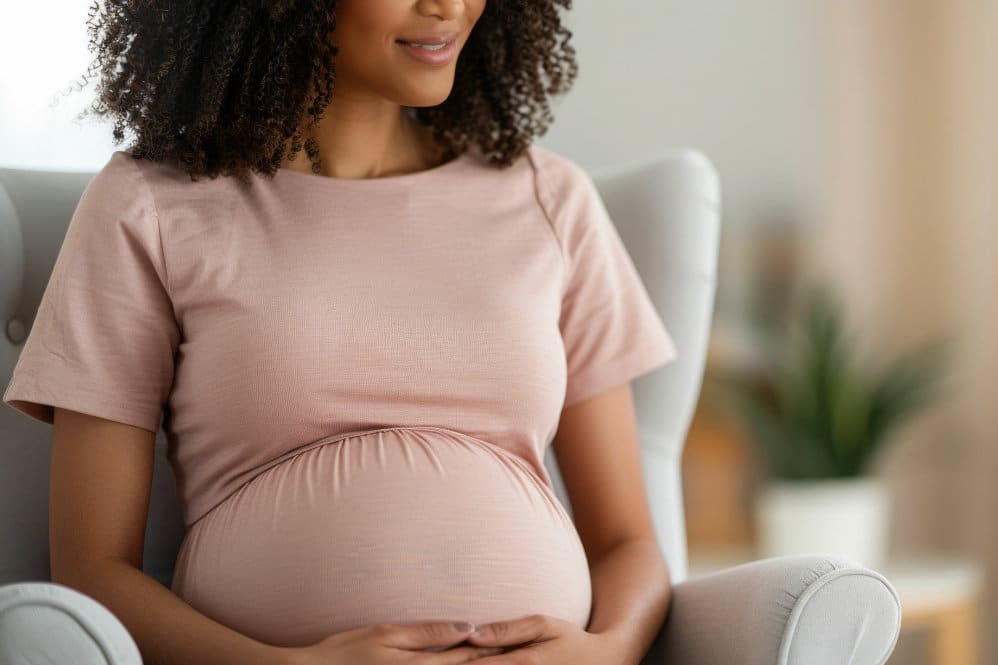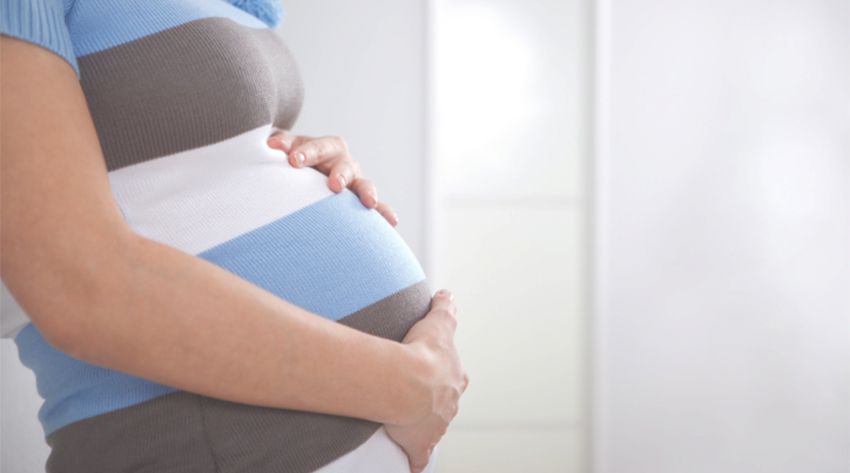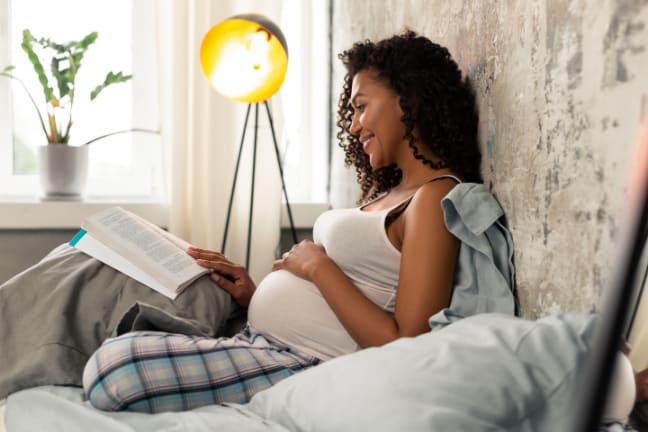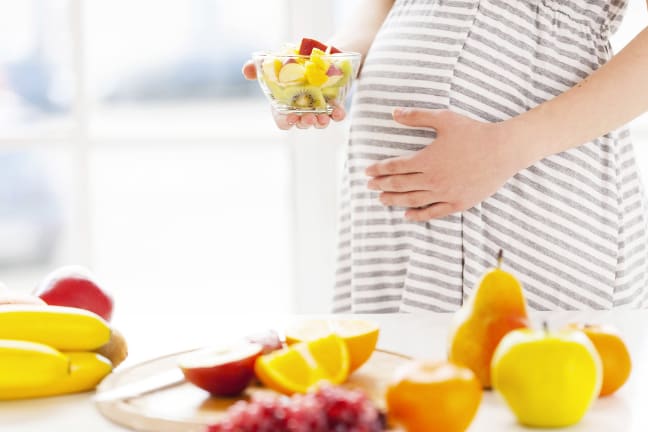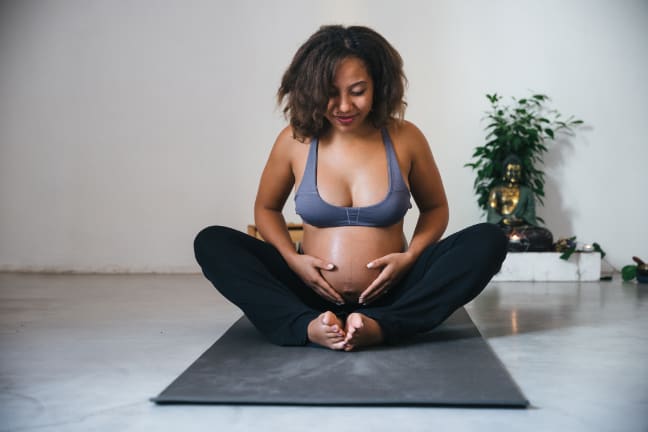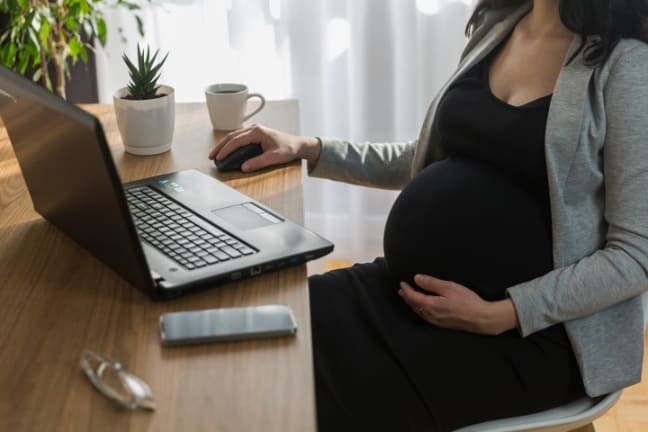Introduction
Your baby at 25 weeks is about the size of an aubergine and getting more active. Experiencing leg cramps? Swimming can help with leg cramps during pregnancy. Swollen ankles are quite common in pregnancy, read our tips to help. Find out more on what to expect at 25 weeks pregnant.
What happens at 25 weeks pregnant?
Your baby at 25 weeks pregnant is about the size of an aubergine, and a super active one at that! They look a lot pinker now too, because their small blood vessels, called capillaries, are forming under the skin and filling with blood. At week 25 baby has already been in their tiny home for five months and understandably might be getting a little stir-crazy inside. That nudge or push you feel might be baby saying ‘Hey, what’s going on out there?’ Just give your tum a gentle stroke and a few pats, they might even reach out their hand to your hand. How cute! As the weeks go on these amazing sensory exchanges will be more frequent and your bond with baby will get even stronger.
What happens to your body at 25 weeks pregnant?
Around now you might experience pregnancy leg cramps, hardly surprising with all that extra weight you’re carrying. One in five pregnant women experience restless leg syndrome or RLS which is the need to move your legs due to a tingling or crawling sensation in them. It’s not always known what causes RLS but exercise has been known to help it. Try some gentle exercise every day like walking, swimming or yoga. Read our top tips to help prevent leg cramps in next weeks article.
What to eat at 25 weeks pregnant?
Listen to your heart. And your cravings. Some women don’t eat the foods they want as they’re worried about upsetting baby. But, if you want a curry, have one. Your baby won’t get any actual curry, only the aromatic experience via the molecules in your amniotic fluid. So go ahead and use all those herbs and spices in your pregnancy diet. Don’t worry about curry inducing labour – that’s just an old wives’ tale.
What are the symptoms of 25 weeks pregnant?
Week 25 pregnancy symptoms can include backache. This is a common symptom during pregnancy and can happen across all trimesters, but it is most noticeable in trimester 2 and 3. There are a number of causes for backache in pregnancy but the main one is due to the weight of the bump pulling forward on the muscles in your lower back. The other culprit is due to a pregnancy hormone called relaxin. This hormone relaxes the ligaments and joints of your pelvis, allowing room for your baby to pass through the birth canal, but it can also loosen the joints of your lower back. Here are some tips on how to prevent back pain in pregnancy:
-
Good posture when you sit or stand. Try and tighten your tummy muscles and keep your back straight when standing or walking. When sitting use a pillow to support your back
-
Exercise is a great way to strengthen your back and abdominal muscles and it will also help with your posture. Aquarobics, prenatal yoga or swimming are great exercises, but if you haven’t exercised before always check with your doctor or midwife first
-
Wear comfortable shoes, preferably flat shoes so you get an even distribution of weight
-
Avoid lifting anything heavy, if you do need to pick something up make sure you bend your knees and keep your back straight
-
Get plenty of rest, especially in later pregnancy
25 weeks pregnancy tips
Are your ankles more swollen than usual? Here’s three very different ways to help:
-
Try sitting back and putting your feet up - literally. Elevating your feet a little helps relieve the pressure on your legs and ankles.
-
Go for a stroll. Walking activates the blood circulation in your calves and carries fluid to other parts of your body.
-
Last but not least, avoid wearing tight shoes
If you also notice swelling in your face and/or hands call your doctor, midwife, or NHS 111 immediately. These symptoms may indicate pre-eclampsia, which is common in pregnancy.



